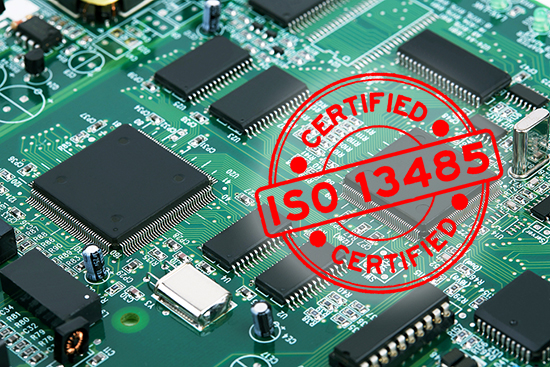In the medical field, advanced medical equipment plays a vital role in accurate diagnosis, effective treatment, and patient health management. Among them, HDI blind and buried via PCB, as a high-performance electronic component, has a wide and important application in medical equipment.

1. Enabling Miniaturized Designs
Medical devices usually needs to be portable and miniaturized so that it can be flexibly used in different medical scenarios, such as emergency scenes, home care, etc. HDI blind and buried via PCB adopts multi-layer structures and sophisticated wiring technology, which can realize complex circuit layout in a limited space. The blind and buried via design allows circuits to be connected vertically between different layers without taking up additional board space, thereby greatly reducing the overall size of the PCB. This provides crucial support for the miniaturized designs of medical equipment, making them lighter, more portable, and more convenient for healthcare professionals to use in various environments.
For example, portable devices like ECG monitors and glucose meters benefit from HDI blind and buried via PCBs, which integrate complex electronic components into compact forms, enabling on-the-go diagnostic services for patients.
2. Improving Signal Transmission Quality
Medical equipment demands exceptionally high accuracy and stability in signal transmission, as any error could impact diagnostic results or treatment outcomes. HDI blind and buried via PCBs feature low impedance and low capacitance characteristics, delivering outstanding performance for high-speed signal transmission. The blind and buried via design can shorten the signal transmission path, reduce signal delay and attenuation, and ensure that data can be transmitted quickly and accurately between various electronic components.
In the field of medical imaging devices, such as CT scanners, MRI scanners and other equipment, HDI blind and buried via PCBs can effectively ensure the high-quality transmission of image signals, thereby providing doctors with clear and accurate diagnostic images. Additionally, in vital signs monitoring devices such as ECG monitors and blood pressure monitors, reliable signal transmission is essential for real-time patient condition tracking. HDI blind and buried via PCB can effectively ensure the accuracy and stability of monitoring data, thereby providing healthcare professionals with timely and reliable diagnostic basis.
3. Enhancing Equipment Reliability and Stability
Medical equipment usually needs to operate stably for a long time to ensure patient safety and treatment effectiveness. HDI blind and buried via PCB adopts high-quality materials and advanced manufacturing technology, and has good heat resistance, corrosion resistance and mechanical strength. This ensures stable performance in the complex operating environments of medical devices, resisting various external factors.
Furthermore, rigorous quality control and testing processes effectively ensure the reliability and consistency of HDI blind and buried via PCBs, reducing the failure rate of products. In the field of critical medical equipment, such as pacemakers and defibrillators, reliable PCBs are an important factor in ensuring patient safety. The high reliability of HDI blind and buried via PCBs can effectively ensure these devices function properly at critical moments, providing timely treatment for patients.
4. Support Multi-function Integration
Medical devices often require the integration of multiple functions to meet diverse diagnostic and treatment needs. HDI blind and buried via PCBs enable the seamless integration of various functional modules, facilitating efficient circuit connections and signal transmission. Blind and buried via technology makes the connection between different functional modules simpler and more reliable, reduces circuit complexity and saves space.
For example, some high-end medical devices, such as multifunctional monitors, can simultaneously monitor multiple vital sign parameters of patients, such as ECG, blood pressure, and oxygen saturation. HDI blind and buried via PCB can integrate these different monitoring modules into one device, achieving multifunctional integration, thereby improving the convenience and efficiency of the equipment.
In summary, HDI blind and buried via PCBs hold significant importance in medical equipment applications. They not only provides key support for the miniaturization, high performance and high reliability of medical equipment, but also provides a strong guarantee for the continuous innovation and development of medical technology.
HoYoGo is an international, professional and reliable medical PCB manufacturer, and we have obtained ISO13485 certification. We have consistently held our production, engineering, and procurement teams to the highest industry certification standards. We have long-term experience and professional technology knowledge in medical PCBA assembly. If you have any related needs, you are welcome to send us an inquiry.